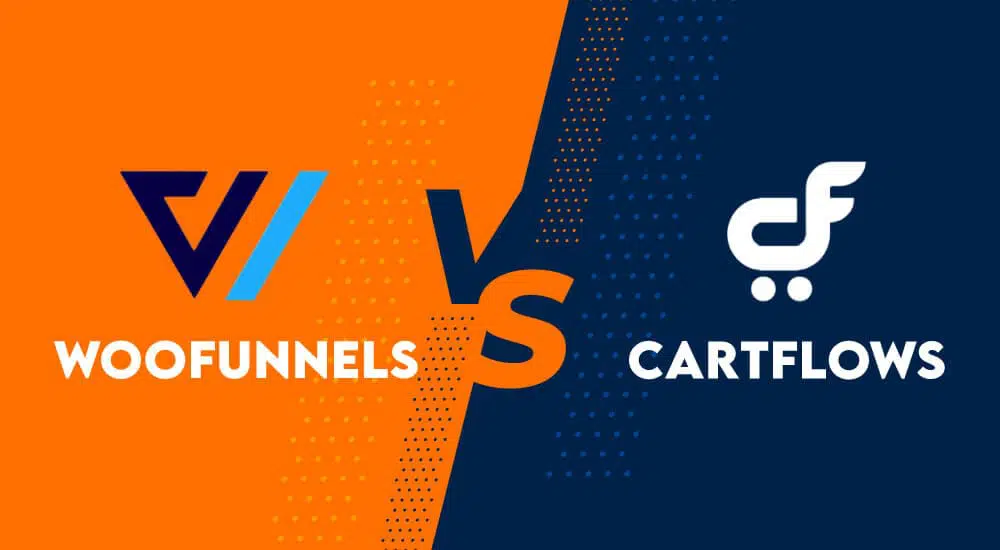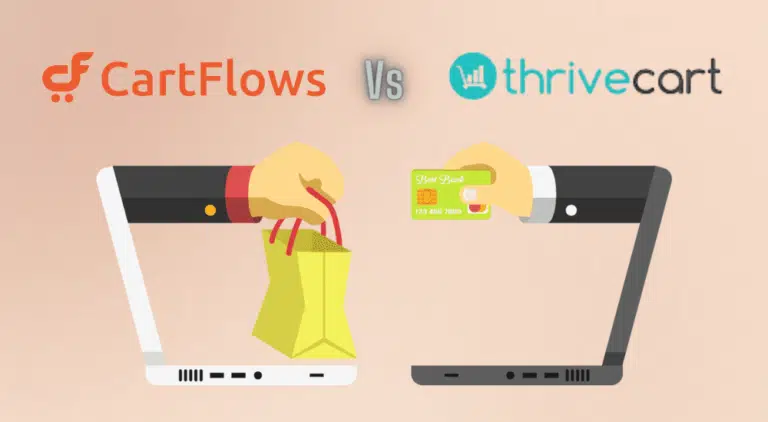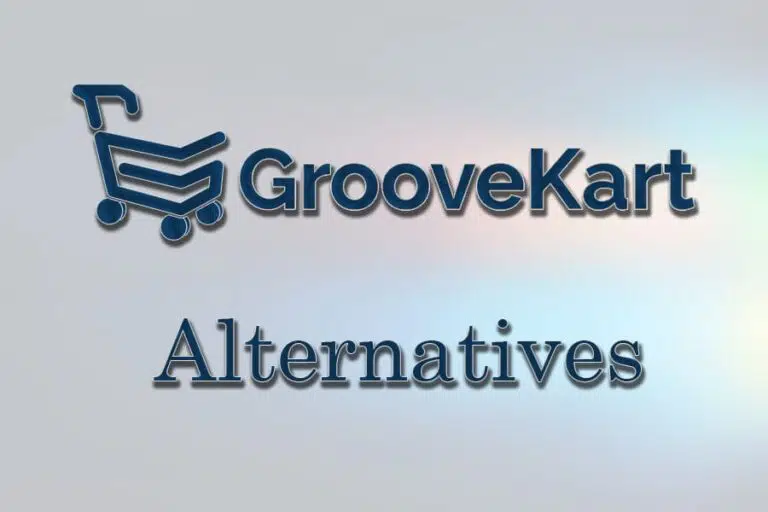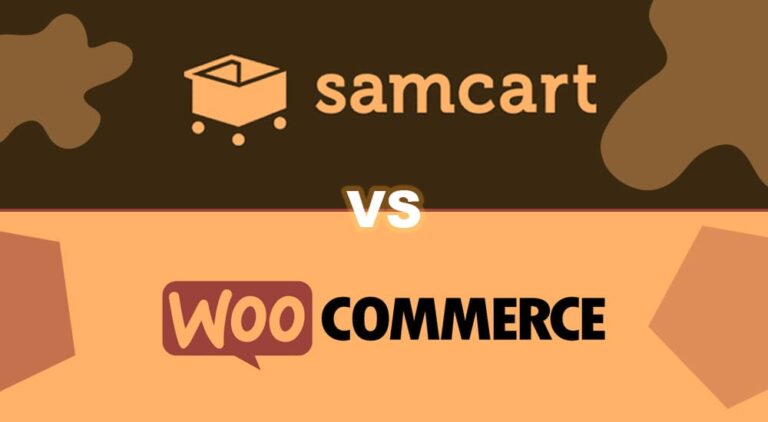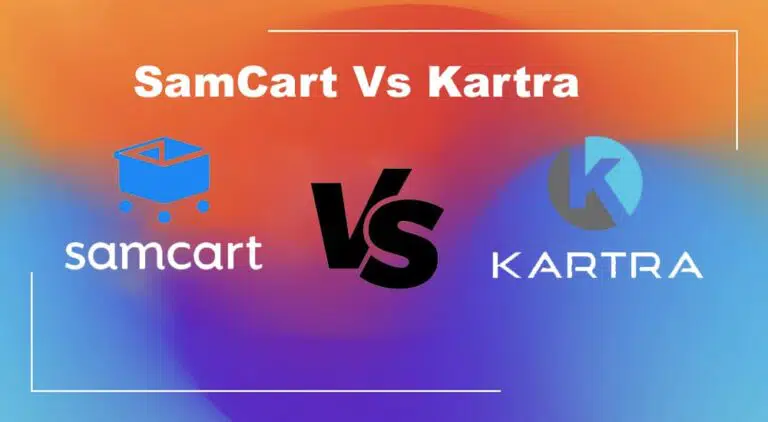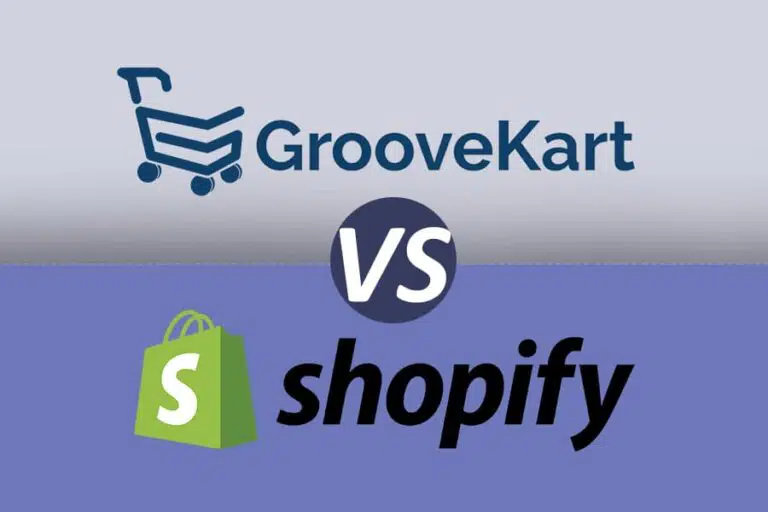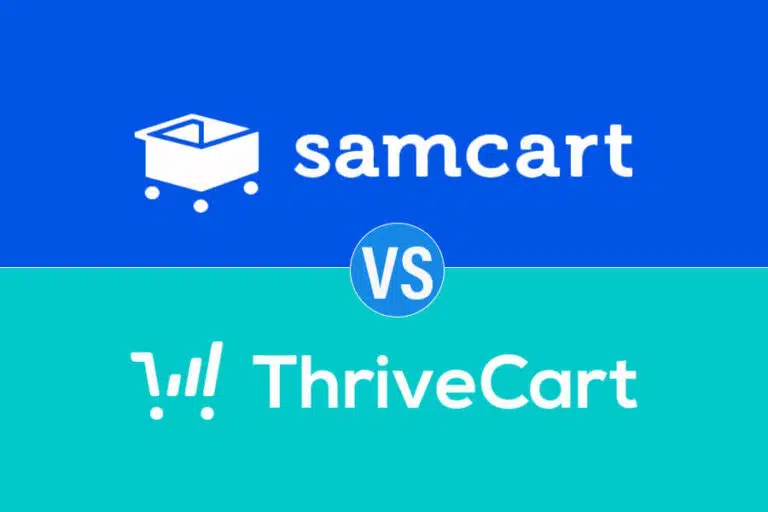This article will compare the two best WordPress shopping cart software: CartFlows vs WooFunnels, to help you decide the ideal cart solution for you.
A shopping cart solution is a set of processes to streamline adding products to the cart until the purchase happens.
Let’s get started.
CartFlows Vs WooFunnels
The table of contents for this CartFlows vs WooFunnels article is as follows:
An Overview of CartFlows
- Features
- Pros and Cons
- Pricing
An Overview of WooFunnels
- Features
- Pros and Cons
- Pricing
CartFlows vs WooFunnels: The Comparison
- Features
- Pricing
- Ease of Use
- Support
Overview of CartFlows
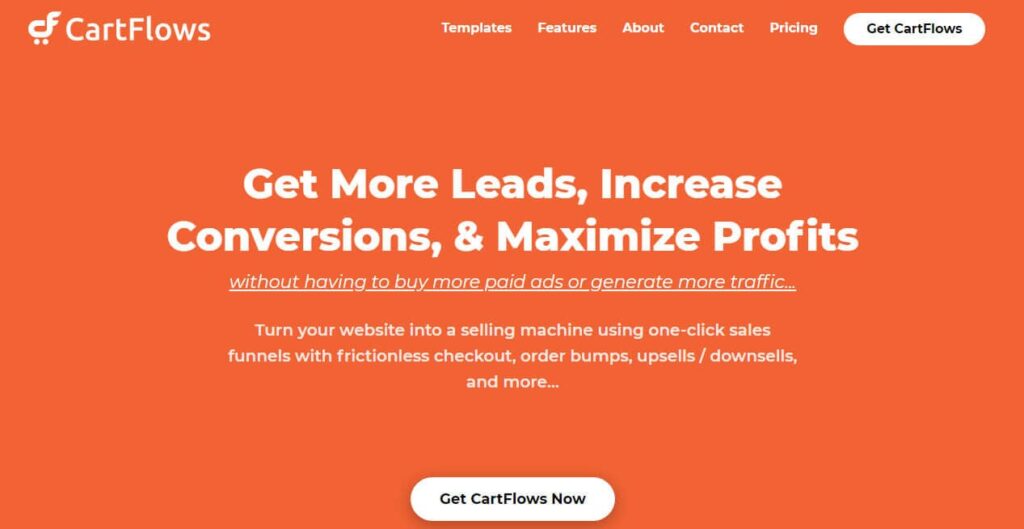
CartFlows came into existence in 2018. The birth of this WordPress sales plugin occurred over a dinner discussion between Adam Preiser and Sujoy Power.
They were frustrated with unpleasant shopping experiences on WordPress-based WooCommerce solutions.
The conversation resulted in establishing CartFlows in 2018 and, in just four years, they are serving over 200,000 users.
Read my CartFlows Review.
Features
Templates for Optimized Funnels
CartFlows provides templates for all of your needs. You might need an opt-in page, a checkout page, or a thank you page; you can get templates for all of them here.
You should consider CartFlows if you have an eCommerce store, an online eBook shop, an online course, or a consultation service, as this is a good match.
Templates let you create a checkout page in minutes, as you don’t have to create the page from scratch. Select a suitable template and replace the content.
Upsell with a Single Click
Upsell helps sell related products.
Your cart solution should have the functionality to display related products that the customer can buy alongside the main product. This process is known as upselling, and CartFlows provides this handy feature.
You get many upsell templates to offer products dynamically. You can customize what products you want to show to the customers, e.g., viewed products, complementary products, etc.
Order Bumps
Order bumps can boost revenue by 10% to 30%. You can add another related or complementary product to the checkout page. Using order bumps, you can let your customers add a complimentary product to the cart with just the click of a button.
Everything is customizable. If you want to offer a user-browsed product or a closely related product, you can do it and increase your revenue by 10-30%.
Pre-Checkout Offers
Pre-checkout offers are similar to order bumps, but the change here is that customers will see the offers before they reach the checkout page.
Once the buyer hits the “place order” button, it displays your offer and gives them the option to either add the product to the cart or ignore it.
This is another feature to boost revenue in CartFlows.
Canvas Mode
You can view your shopping cart funnel on a wide canvas for a better view. This helps you identify any loopholes in the funnel so you can make quick changes and bridge the gaps.
If you find something worth tweaking, you don’t have to leave Canvas Mode to make those changes.
Split Testing (A/B)
You know what A/B split testing is if you know about email marketing.
CartFlows offers this functionality to help you find what works best for your page. Here, you create two versions of a page and test them. With insights, you find out the best-performing page and select the winner.
Checkout Layout
The checkout page is the most crucial page, where your users enter their card details to make purchases.
It’s important to avoid using too many fields as it can bore the customer, and they might abandon their cart. You must do this step right.
While most WordPress cart solutions don’t give you the liberty to customize the checkout layouts, CartFlows is an exception. You can decide on the checkout page layout and the required fields.
Lead Generation
The audience becomes leads. Leads mean conversion, and conversion means money.
You can create lead-generating landing pages with the built-in opt-in templates and embed them on your website or send them directly from CartFlows to welcome leads. CartFlows let you do this as well.
Integrations
You may have other applications that you use daily, and if you wish to integrate them with your sales funnel builder, you can boost your productivity and efficiency.
In CartFlows, you can integrate with WordPress plugins and WooCommerce extensions and get things done as a team.
Insights
Here you can see the results of your actions. You will see a lot of data. The revenue, cart values, cart abandonment rate, and everything else all help you gain insights into the whole scenario.
Analytics show you the accurate picture.
Pros and Cons
Pros
- The tool works well with the WordPress plugin and the WooCommerce extensions. If you are using a WordPress page builder such as Thrive Architect, Elementor, Beaver Builder, etc., and want a cart solution, CartFlows is at your service.
- CartFlows has an easy-to-use interface.
- You get responsive customer care support as well as good material support.
- You can get help from the Facebook community, YouTube tutorial videos, a knowledge base, helpful blogs, and ticket support.
- You get a 100% 30-day money-back guarantee.
- The cost, as compared to WooFunnels, is relatively inexpensive.
Cons
- If you are looking for a shopping cart platform not based on WordPress or WooCommerce, you cannot use this platform.
Pricing
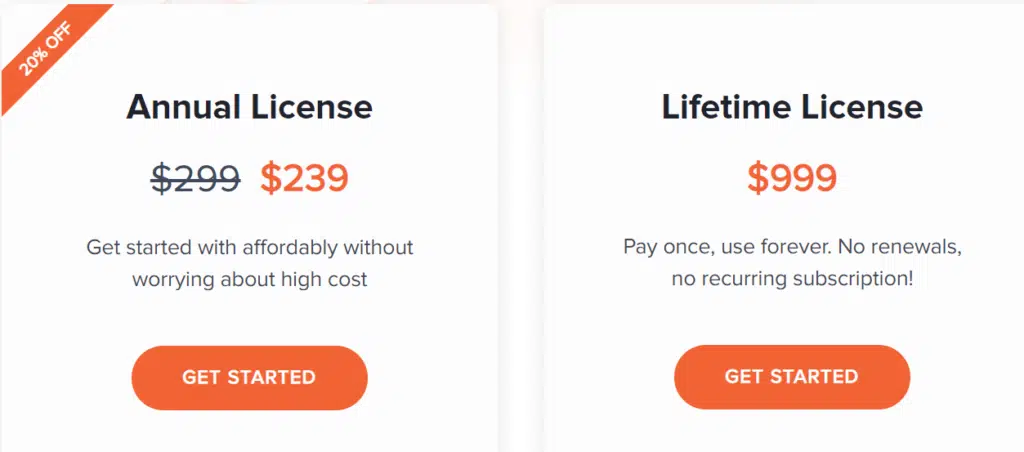
You have an Annual plan and a Lifetime plan.
The Annual plan comes at 239 USD per year, and the Lifetime plan is available for 999 USD and can be paid in 4 monthly installments.
In both subscriptions, you get similar features, such as useability on up to 30 websites, unlimited funnels, premium templates, and all of their other features.
That is all for CartFlows’ overview.
Now let us meet our CartFlows alternative, WooFunnels.
Overview of WooFunnels
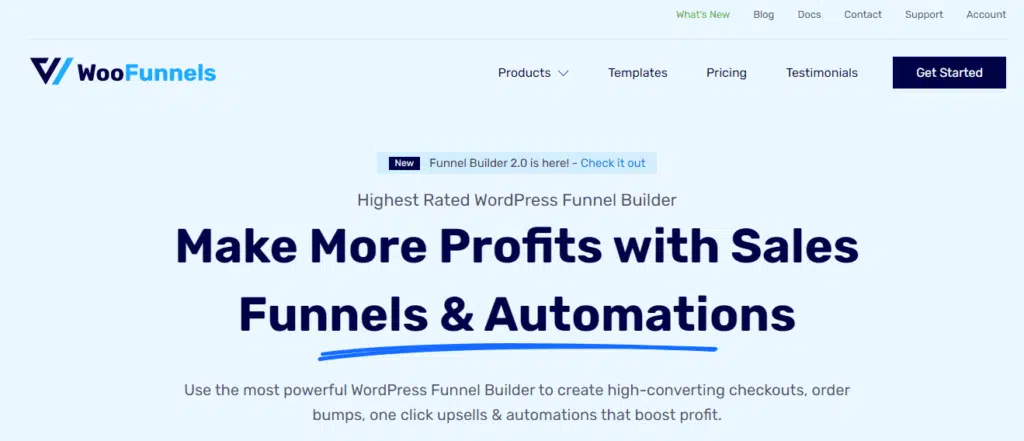
WooFunnels, or should I say buildwoofunnels, was a service company that used to help businesses with functionalities through custom coding.
While working for these businesses, they found the solutions for WooCommerce frustrating, so they decided to package their services as an extension of WooCommerce.
Led by Daman Jeet Singh, CEO of buildwoofunnels, WooFunnels was launched in July 2018, and since then it has served more than 15,000 users with a 98% customer satisfaction rate.
Now, let’s talk about the exciting capabilities of WooFunnels.
Features
Capture
It consists of well-designed landing and opt-in page templates with customizable form fields that can be embedded on your site. You can also set the forms on a pop-up to capture leads.
Convert
In WooFunnels, you can customize your checkout layout the way you want it to. You can choose a multiple-step checkout page or a single-step page.
You get several checkout layout designs that you can use in WooFunnels.
Increase
This function means increasing your cart value and bringing more revenue to your business by adding one-click order bumps when your customers are ready to check out.
You get dynamic bumps, and by “dynamic,” it means customizing depending on the customer’s cart item or user pattern. You also get 17+ rules.
You also get several order bump templates, so you won’t have to compromise on your look.
Upsell
WooFunnels provide many templates for one-click upselling. You can create upsell, make them dynamic, and ensure you close the deal and enhance your cart value in WooFunnels, just like you can with Cartflows.
Insights
In WooFunnels, you get a detailed, in-depth analysis of every funnel. You can see all the purchasing data. How much has the contact paid, through a bump offer, upselling their order, etc.?
A/B Testing
WooFunnels offers A/B testing functionality to continue testing your pages and pick the best performer for you.
WooFunnels can meet your marketing automation needs and necessities. This is also known as “Autonami.”
Autonami has four pillars:
- Pillar-1: A lightweight CRM that consists of your contacts information. From the order placed to the products bought, you know everything. You can tag contacts and segment them to automate communication-related to their tag-related topics.
- Pillar-2: Automated Follow-Ups. There’s more after the purchase. You get an opportunity to connect with them about their purchased product-related matters. You can let them know about other products send them emails with offers and coupons to complete the purchase.
- Pillar-3: Smart Workflows is the third pillar, similar to what automation does to emails. You can set automated actions based on “if and but” rules. For example, if someone fills out a form, the lead gets added to the CRM with a tag.
- Pillar-4: Integration is the fourth pillar. This allows you to integrate with other applications and set automation.
Pros and Cons
Pros
- Though it does not offer free usage, it has a 14-day money-back guarantee.
- It has a good number of features.
- It has good ratings.
- It has a sales funnel as well as automation features.
Cons
- It does not have a free plan.
- The pricing is expensive.
Pricing
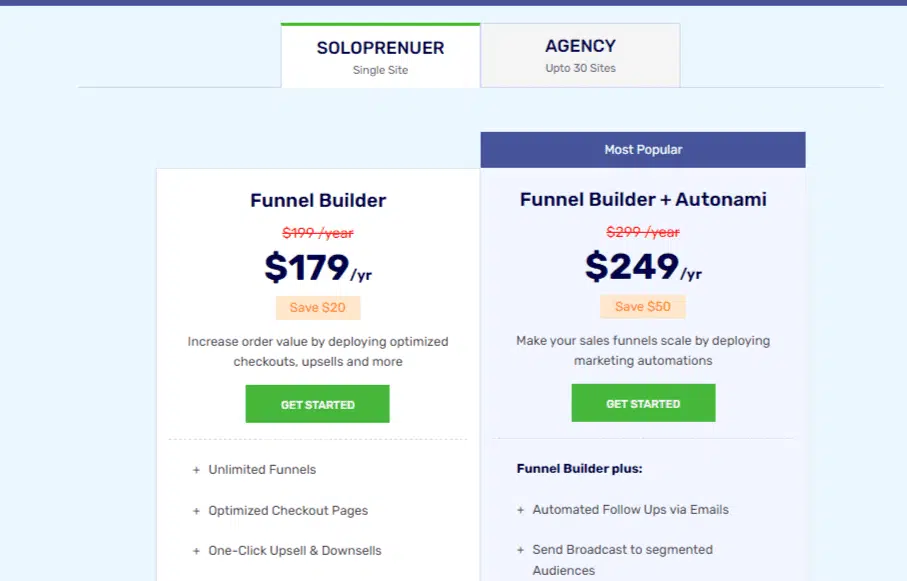
WooFunnels has two pricing plans. The first plan is “Solopreneur,” which supports one WordPress website, and the other is the Agency plan, which supports 30 WordPress websites.
Both pricing plans have two subscription offerings, “Funnel Builder” and “Funnel Builder + Autonami.”
The Solopreneur plan’s pricing can be seen in the above image, so skipping the reiteration lets us know about the agency plan’s subscription rates.
Agency plans are designed for agencies or for someone who works for multiple websites. WooFunnels’s Agency plan facilitates up to 30 websites.
WooFunnels’s Agency plan comes with two subscription kinds: Annual and Lifetime.
The pricing plan for WooFunnels’s Agency plan is the following:
Annual Plan
Funnel Builder: The annual cost stands at 249 USD.
Funnel Builder + Autonami: The flagship plan is available at 399 USD per year.
Lifetime Plan
Funnel Builder: You need to pay 899 USD to avail of the lifetime offer on this plan.
Funnel Builder + Autonami: You get a lifetime subscription to this plan for just 1,499 USD.
CartFlows vs WooFunnels – The Comparison
Features
Both shopping cart software offers similar features, but WooFunnels has done better than CartFlows with its Autonami features.
Comparing both solutions based only on their sales funnels would have been a tie, but WooFunnels included more automation-related features.
Results: WooFunnels is the winner.
Pricing
CartFlows has two pricing plans, and WooFunnels has four. Two solopreneur plans, and the rest are the agency plans.
Let us compare CartFlows’ pricing with WooFunnels’ agency plan since both of them offer usage on up to 30 websites, whereas the solopreneur allows just one website.
So CartFlows have an annual plan and a lifetime plan. The annual plan costs 239 USD per year and the lifetime plan is available at 999 USD. This can be paid in 4 monthly installments.
On the other hand, WooFunnels also has an annual and lifetime plan. Its annual plan for just the funnel builder without the Autonami features comes in at 249 USD per year, and the agency plan for the same is available at 899 USD.
You can see that the annual plan of CartFlows is lower than WooFunnels. In contrast, the lifetime plan of WooFunnels is lower than CartFlows, but CartFlow allows you to make payments in multiple installments.
Hence, I give this point to CartFlows.
Results: CartFlows is the winner in this parameter.
Ease of Use
Both shopping cart solutions have easy-to-use interfaces.
Results: It’s a tie.
Support
In terms of support, you get video tutorials and knowledge bases, and these are available in both software Still, WooFunnels lacks community support, which we get in CartFlows.
Result: CartFlows is the winner.
Conclusion
We have the scoreboard ready, which says that CartFlows has scored 2 and WooFunnels has 1. And in this comparison article, the winner is CartFlows.
But I must say that both shopping cart tools are good WordPress solutions and capable of satisfying your requirements.
As a sales builder, you can’t go wrong with either of these builders. Understand your requirements and choose the software that fulfills your needs.
Here is where this CartFlows Vs WooFunnels post ends. Let me know what shopping cart software solution you have selected for your business, and please share it through the comments section.

